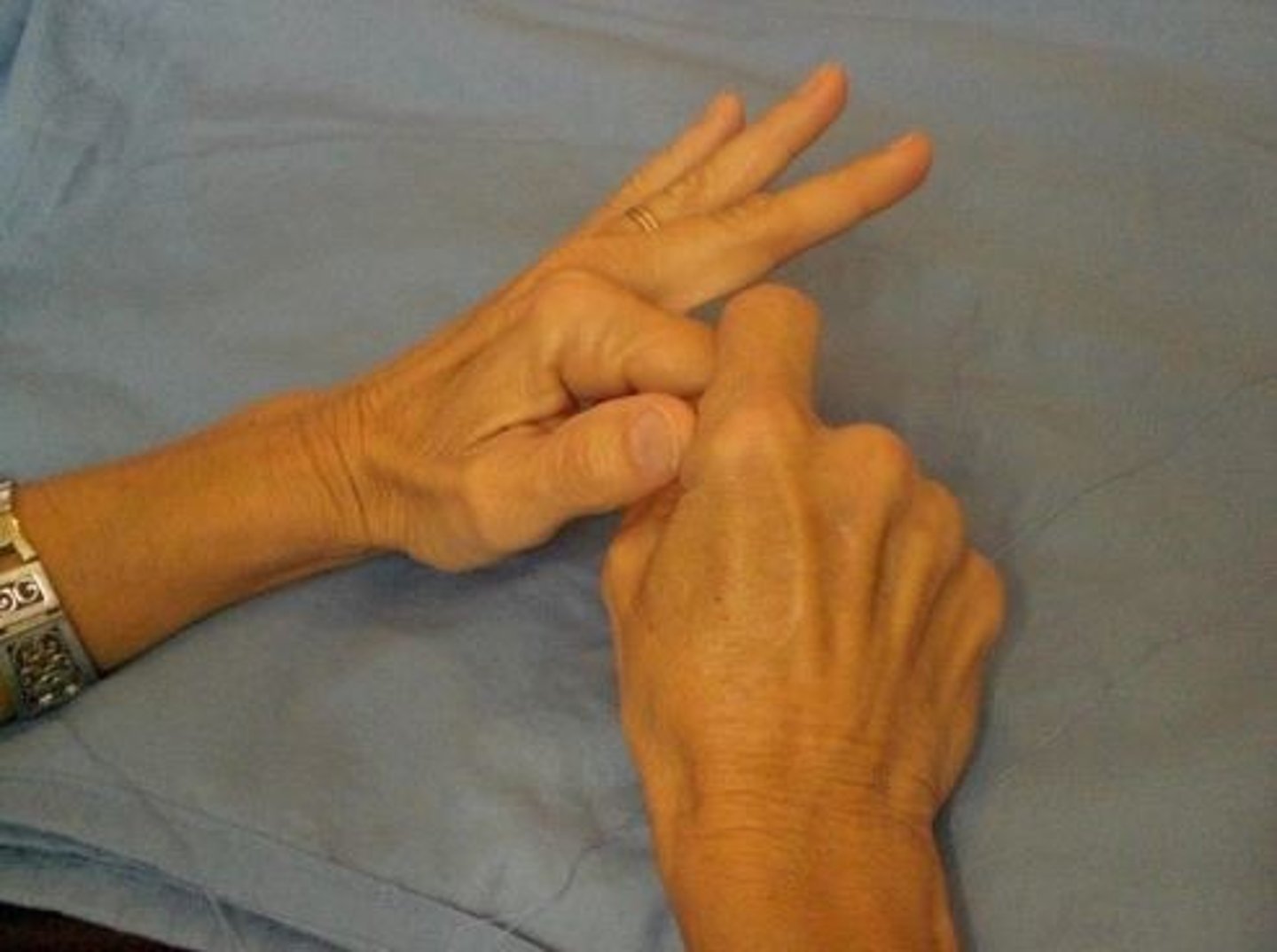Therapeutic Exercises
1/72
There's no tags or description
Looks like no tags are added yet.
Name | Mastery | Learn | Test | Matching | Spaced |
|---|
No study sessions yet.
73 Terms
Be honest: is active exercise the best kind of exercise?
sure is! you want your client to be using their own power
What are some goals of therapeutic exercise?
To develop or restore muscular strength, endurance, or flexibility
To improve neuromuscular coordination
To increase cardiovascular efficiency
Target health and performance factors
Rehabilitative vs habilitation exercise?
rehabilitative: restoration of function lose due to injury, disease, or behavioral traits
habilitative: acquisition of age-appropriate skills and functions
T or F: immobilization decreases joint mobility and tendon gliding
true
how do we fix it? movement!
T or F: scars can bind gliding structures together and reduce mobility
True
T or F: edema does not contribute to decreased tissue gliding
False, chronic edema is like filling a body part with glue
How can the "stress" of movement benefit gliding structures?
Enhances normal orientation of fibrils, preventing cross links
Increases tendon and ligament strength
Can influence collagen formation to maintain or restore tissue gliding and motion in joint
What are some ways to increase/decrease exercise dosage?
Intensity/force (how much you're contracting the muscle, how hard to passively stretch joint)
Duration (how long force is sustained)
Frequency (how many reps? how many sessions?)
What kind of exercise should you do in the inflammatory stage?
none!! rest the tissue instead
What kind of exercise should you do in the fibroplasia stage?
low, gentle force, few repetitions
performed in pain-free range
gradually increase as tensile strength increases
why? stimulates collagen production
What kind of exercise should you do in the maturation stage?
low load, prolonged duration
mild, prolonged at end range of joint motion
exercise to stretch tissues and create changes
focus on reducing stiffness and increasing tendon excursion
What is tenodesis?
the synergistic coupling of wrist extension with finger flexion and wrist flexion with finger extension
shows soft tissues are normal
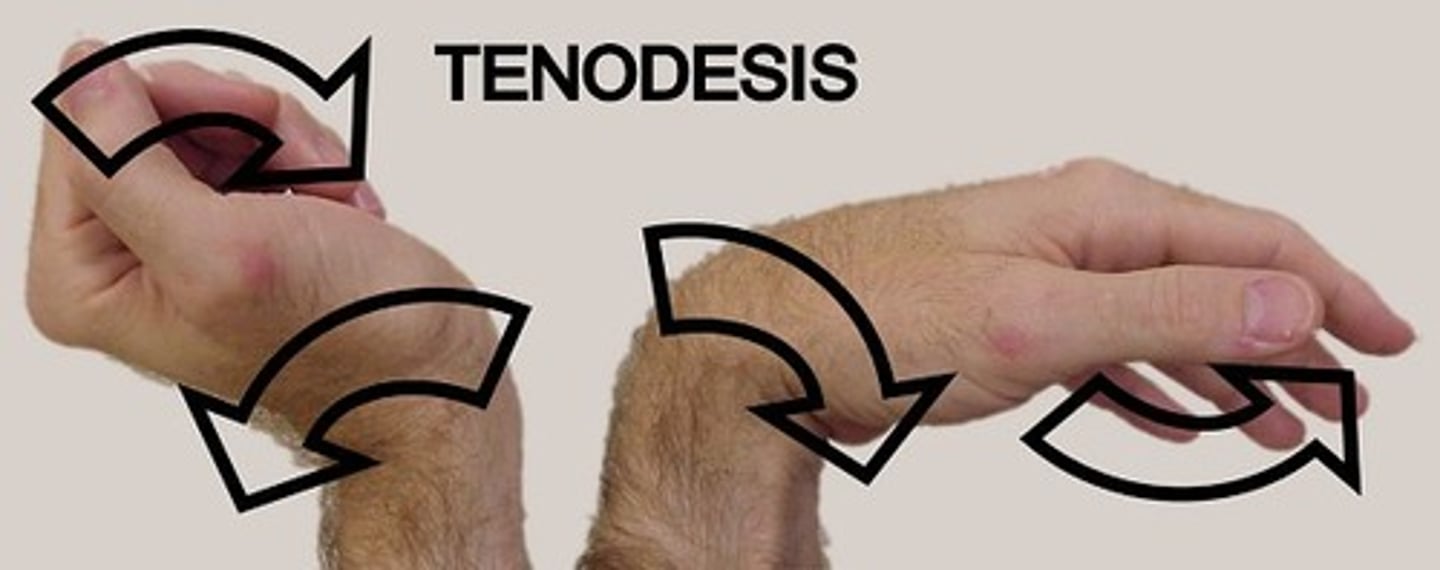
T or F: the fingers should extend before the wrist does
False
the fingers should not be leading wrist extension, this usually indicates substitution due to weak extrinsic extensors I think
What are treatment goals you could see with therapeutic exercises?
Manage pain
Improve posture
Increase motion
Increase endurance
Increase strength
Restore function
What is passive exercise?
Exercise performed by a person by manual or mechanical means; no voluntary muscle contraction occurs
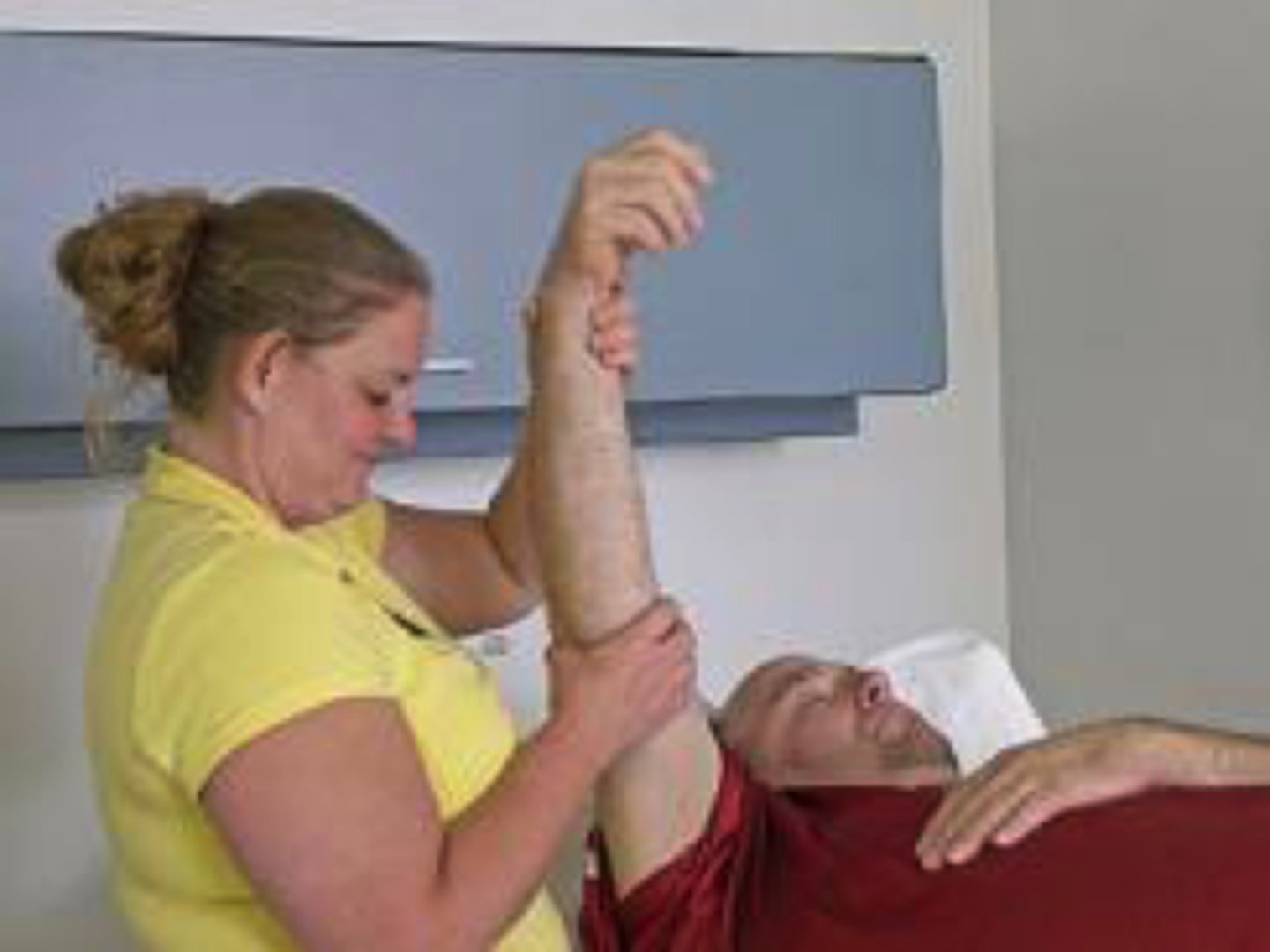
What are some benefits of passive exercise?
maintains joint/soft tissue mobility
edema control (usually in combination with massage)
increases circulation
increases synovial fluid
pain management
When would you do passive exercise with a client?
pain with active movement
weakness
need to maximize ROM
joint replacement
contracture management (for both soft tissue and bony)
paralysis
spasticity
T or F: passive exercise maintains muscle mass
FALSE, they're not even contracting the muscle............
What are precautions to consider with passive stretching?
Mobilizing unprotected joints
Causing additional trauma
Stretching the wrong joint
Osteoporosis (bones could fracture)
Edematous tissues are more susceptible to injury
For passive stretching, where in the ROM should you be stretching in order to lengthen soft tissues?
at end range
For passive stretching force should be ________, ___________, and ____________
slow, gentle, sustained
T or F: stretching can elongate contractile and non-contractile tissues
True
Joint contractures require __________________ before stretch (to determine ________)
joint mobilization
end feel
How do you avoid joint compression during stretch?
do joint distraction (opening joint) before
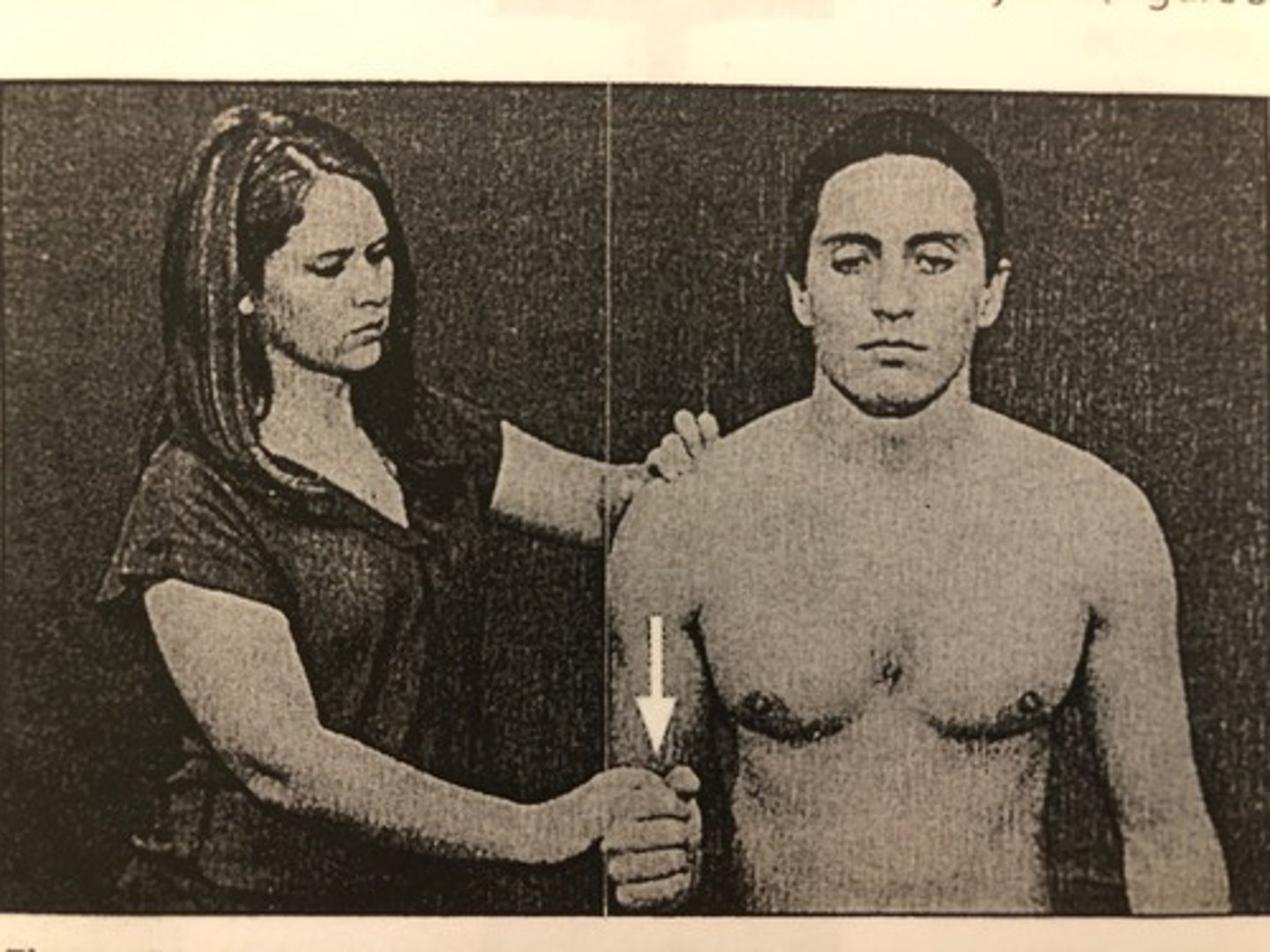
T or F: 2nd - 5th CMC joints are immobile
False!
2nd and 3rd are immobile
4th and 5th have 10-20 deg of flexion
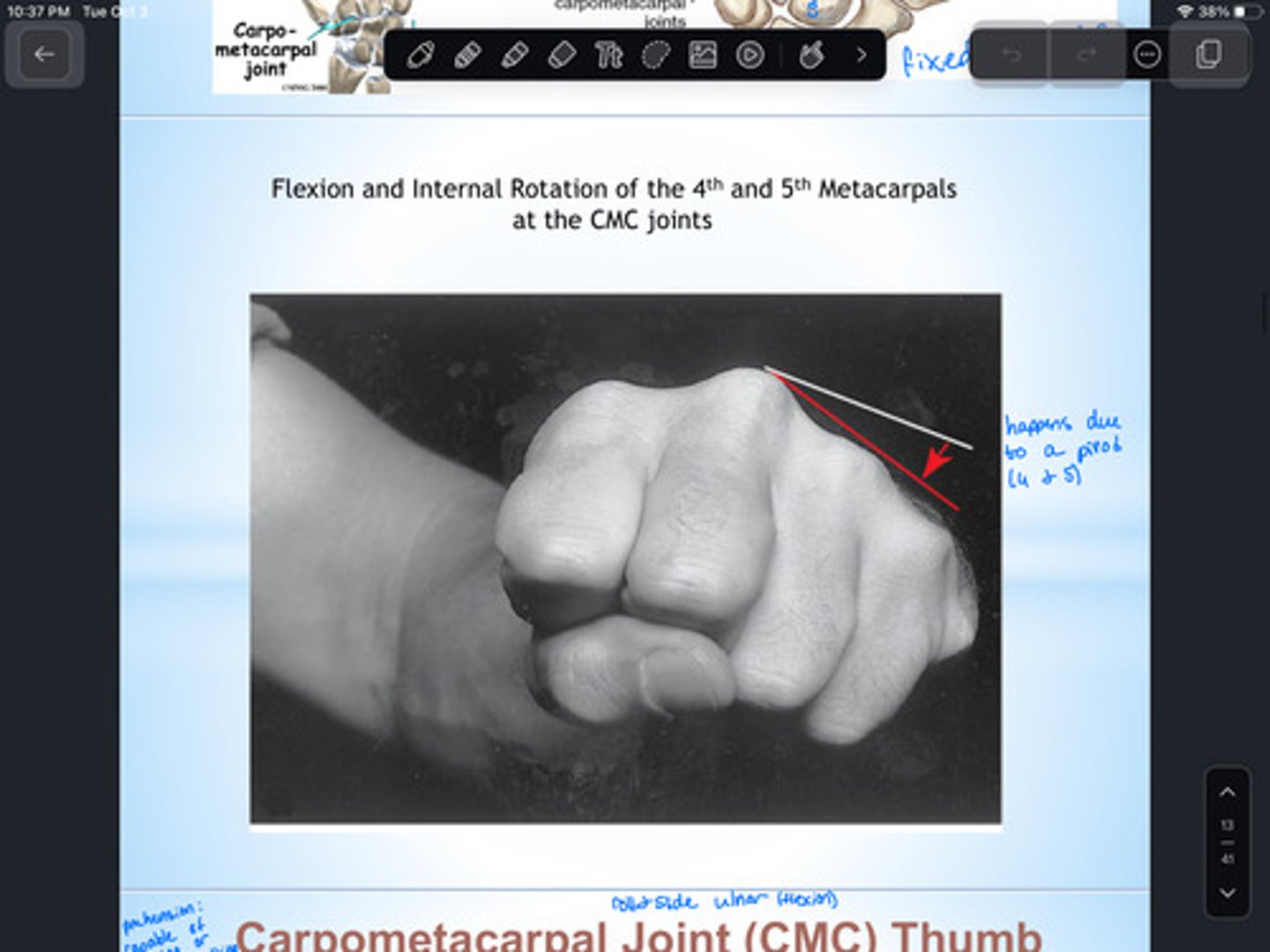
Exercise to increase palmar arches?
Place thumb in palm and fingers on dorsum of hand, roll metacarpals around thumb
How to passively stretch forearm pronation and supination?
Stabilize humerus
Apply rotational force to distal forearm
Do this with elbow flexed and elbow extended
When passively stretching forearm, why should you stretch with elbow flexed and extended?
Pronation limitation can be caused by bicep tightness
(biceps assist with supination)
What is contract-relax technique and what does it do?
Isometric contraction of tight muscle before passive lengthening can give you more stretch
ex. make fist before stretching flexors
Stretching technique for intrinsic muscles of the hand?
PIP/DIP in flexion, MCP gently stretched into extension
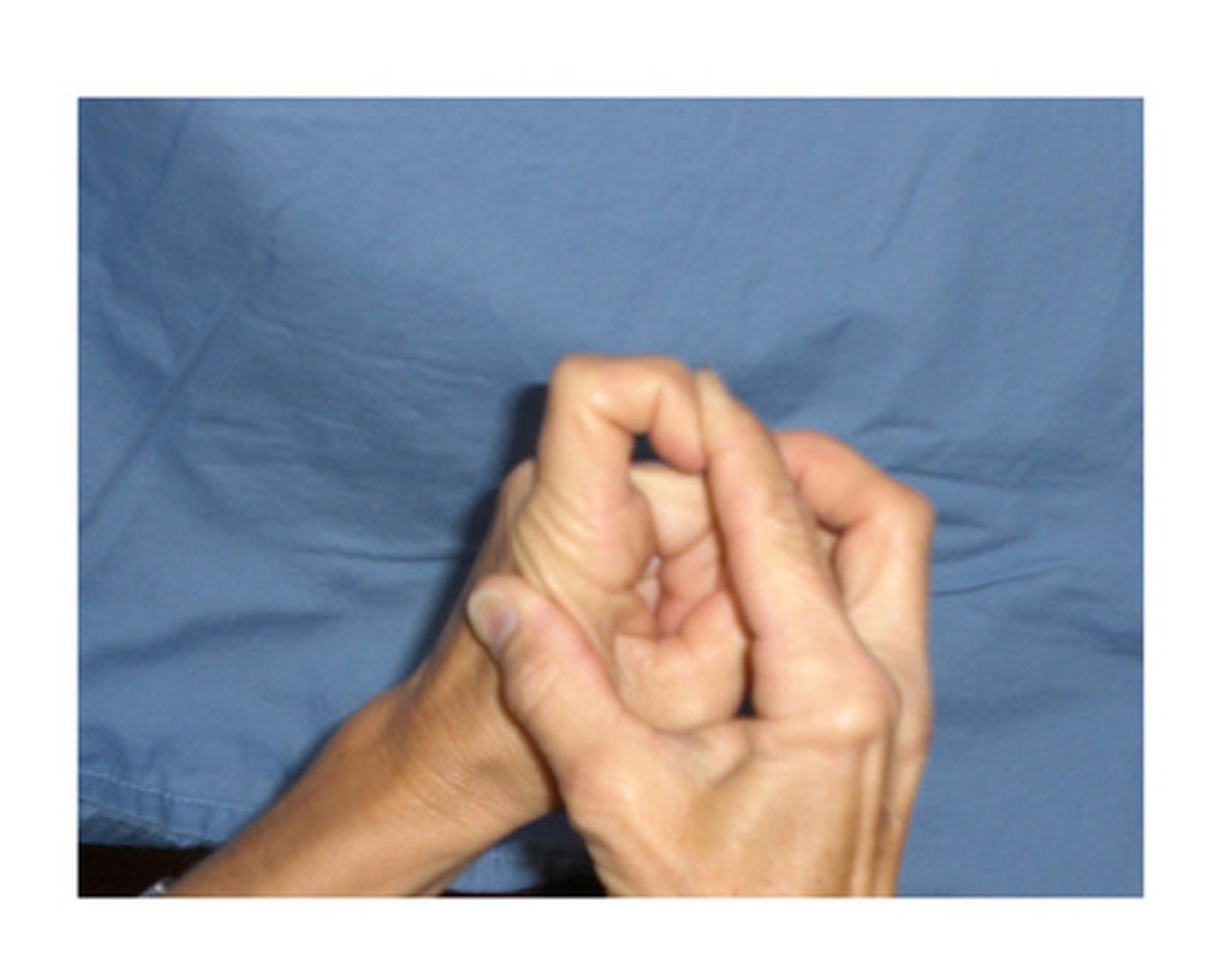
How to stretch extrinsic extensors? How to stretch extrinsic flexors?
exercises you did before playing in band
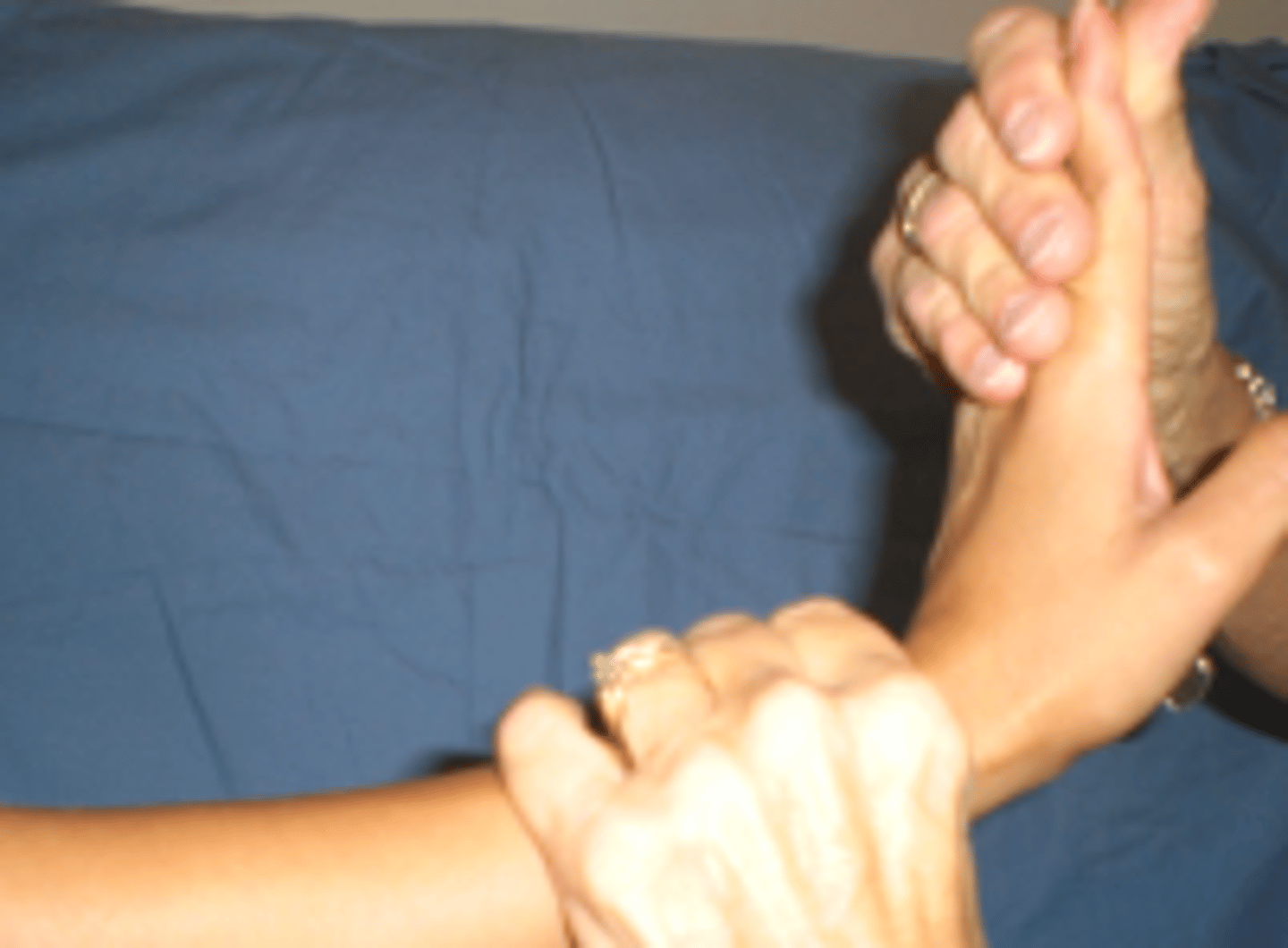
Indications for active exercise?
Maintain joint mobility
Increase synovial fluid
Pain management
Produce tendon glide
Maintain elasticity/contractility of muscles
Stimulus for bone integrity
Edema control
T or F: in order to maintain mobility, active exercises must be performed through full available ROM
True
T or F: you should prescribe exercises to areas that aren't directly affected by injury
True!
Areas like the neck, shoulder, elbow, forearm, and wrist can become tight after hand disuse)
T or F: to restore mobility, active exercises should involve quick movements
False
What are blocking exercises?
Direct force to stiff joint by isolating
Used for force transmission
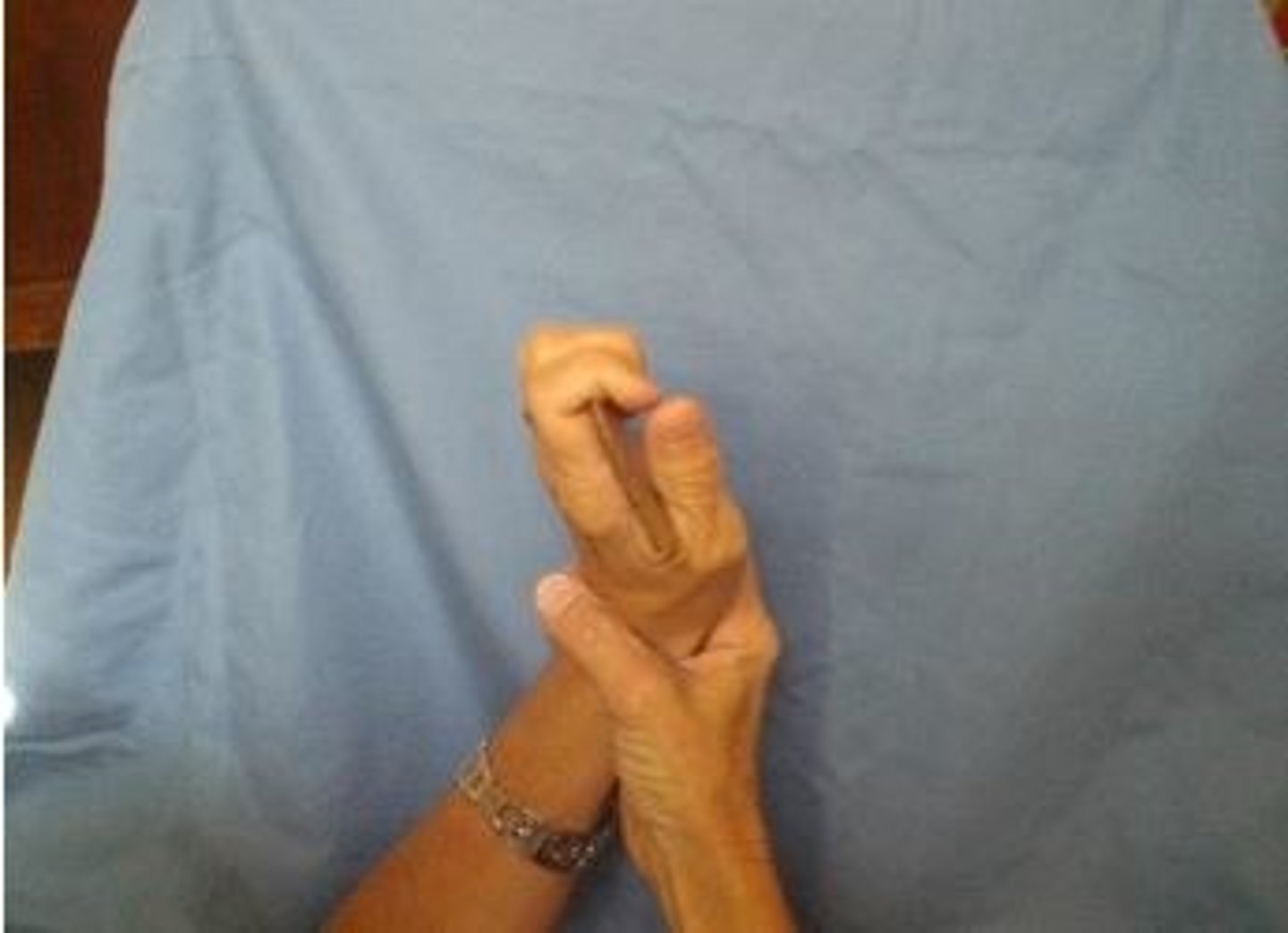
What is active-assistive exercise?
Type of active motion where an outside force assists a joint to complete movement
What is the rationale for resistive exercise after immobilization?
Immobilization leads to muscle atrophy
Atrophy leads to decreased muscle strength
Weak muscles are ineffective to mobilize stiff joints
Resistance increases strength
Strengthening will increase the exertion the patient is able to place on stiff joints and restricted tendons
What are the colors of theraband/digiflex in order from lightest to heaviest resistance?
Yellow
Red
Green
Blue
Black
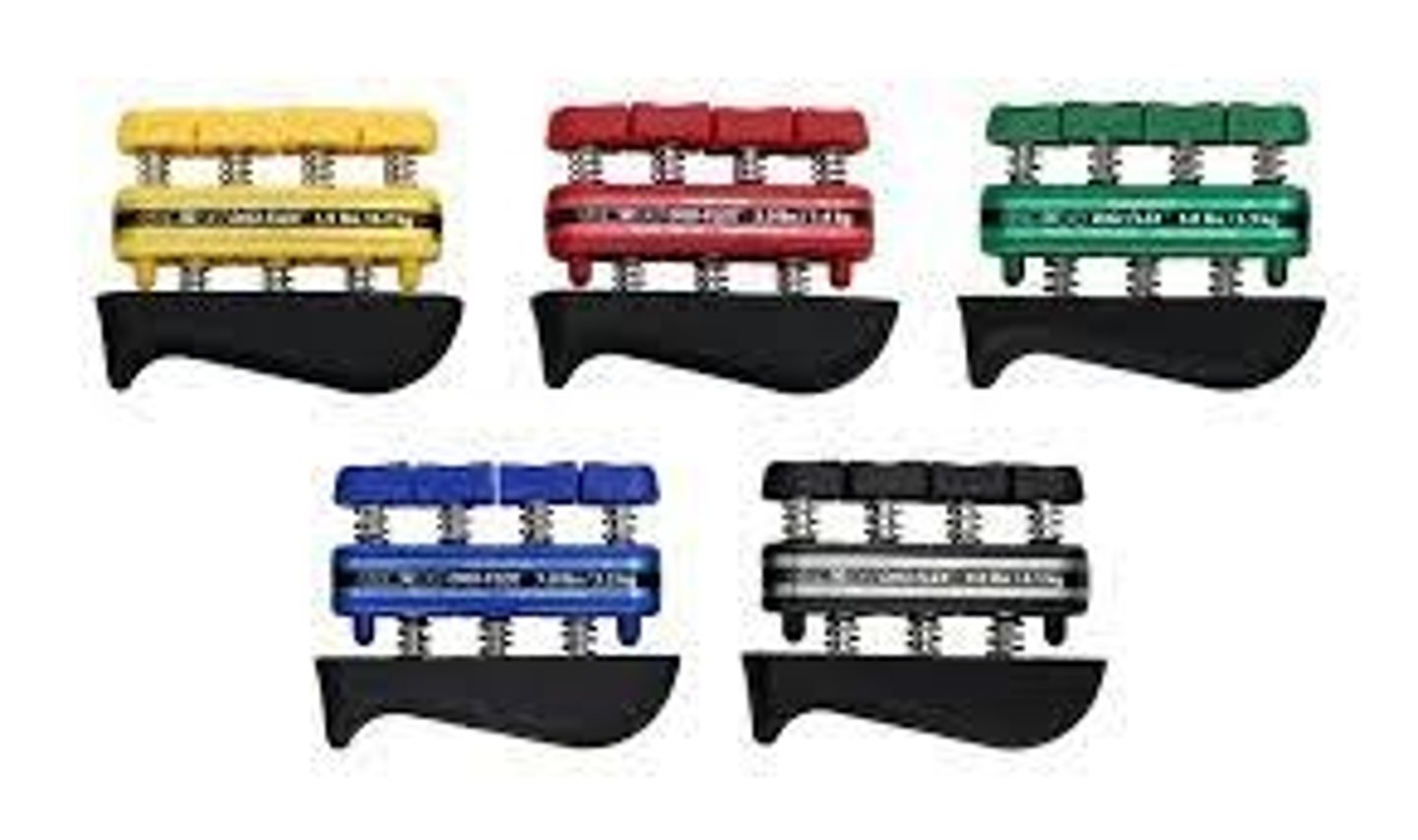
Are resistance exercises used to strengthen muscle groups or individual muscles?
muscle groups
Synergistic finger _______ and wrist ________ is important to increase grip strength
flexion, extension
Is a cylindrical or spherical grip used more often in functional activities?
Cylindrical
What kind of exercise is best for scar remodeling?
resistive exercise
low load, long duration force at end range leads to lengthening in scarred tissues
_______ __________ provides proximal pull on tendon adhesions
muscle contraction (resistive exercise)
In order to increase strength, you need to promote ___________ muscle contractions
sustained (during resistive exercise)
How should you mobilize adhesions?
Do an activity where flexor muscles are contracting and providing tension on adhesions
ex. hammer, clothespin, screwdriver
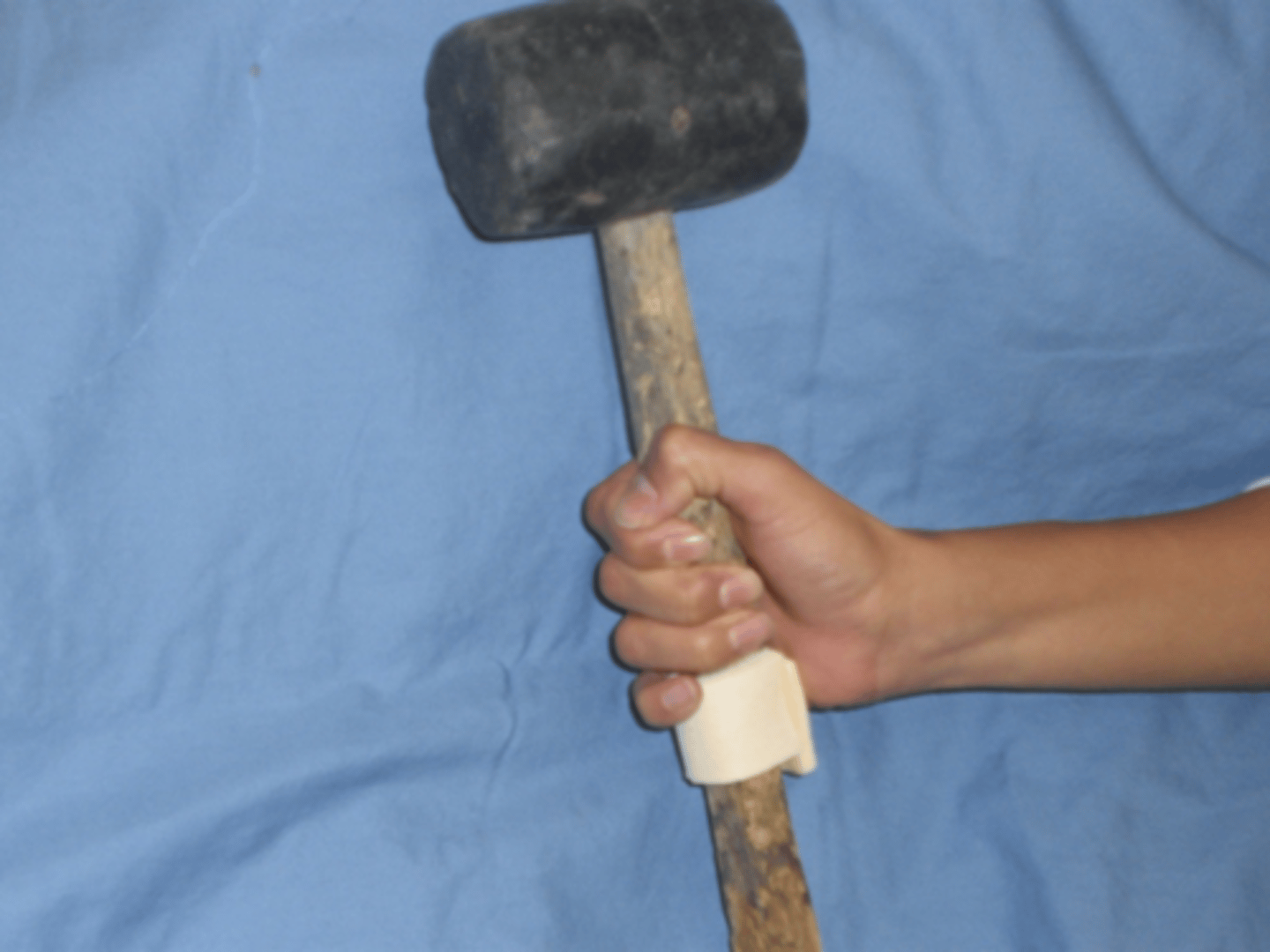
What is tendon gliding?
The need for tendons to glide in relation to surrounding structures
How can OT's help resolve tendon glide in scarred & adherent tendons?
Lengthen adhesions proximally and distally
proximal glide (at origin): requires strength (do active contractions)
Distal glide: passive stretching or use or orthotic
Which is better for tendon glide: active or passive motion?
Active!
Think cooked spaghetti noodle in straw for passive
How do you facilitate tendon glide in the FDP?
DIP flexion, PIP extension
How do you facilitate tendon glide in FDS?
PIP flexion with MCP extension
What hand position has the maximum glide between FDS and FDP?
hook fist
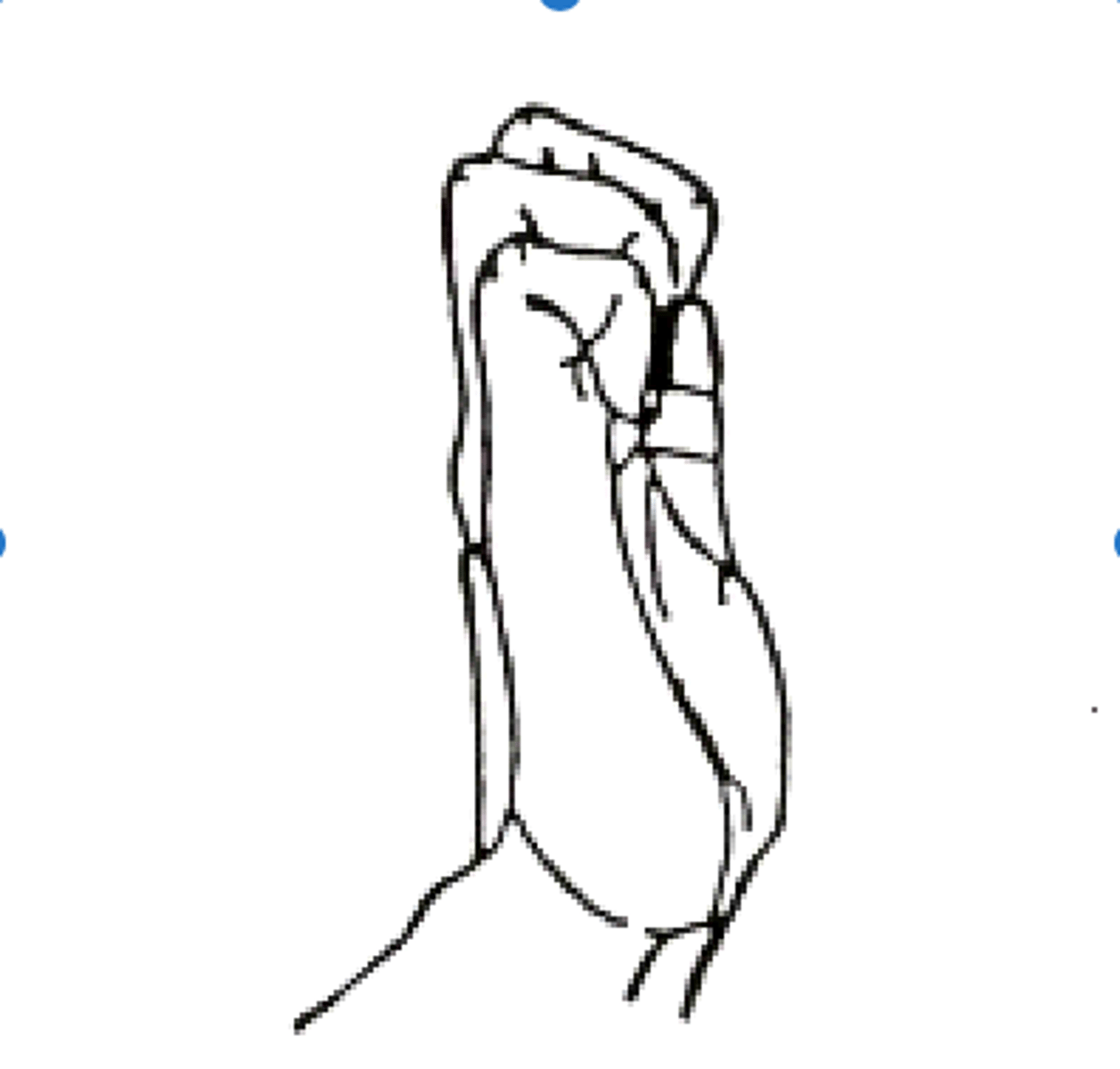
What hand position has maximum glide of FDP? Which has maximum glide of FDS?
FDP: composite flexion (picture)
FDS: flat fist
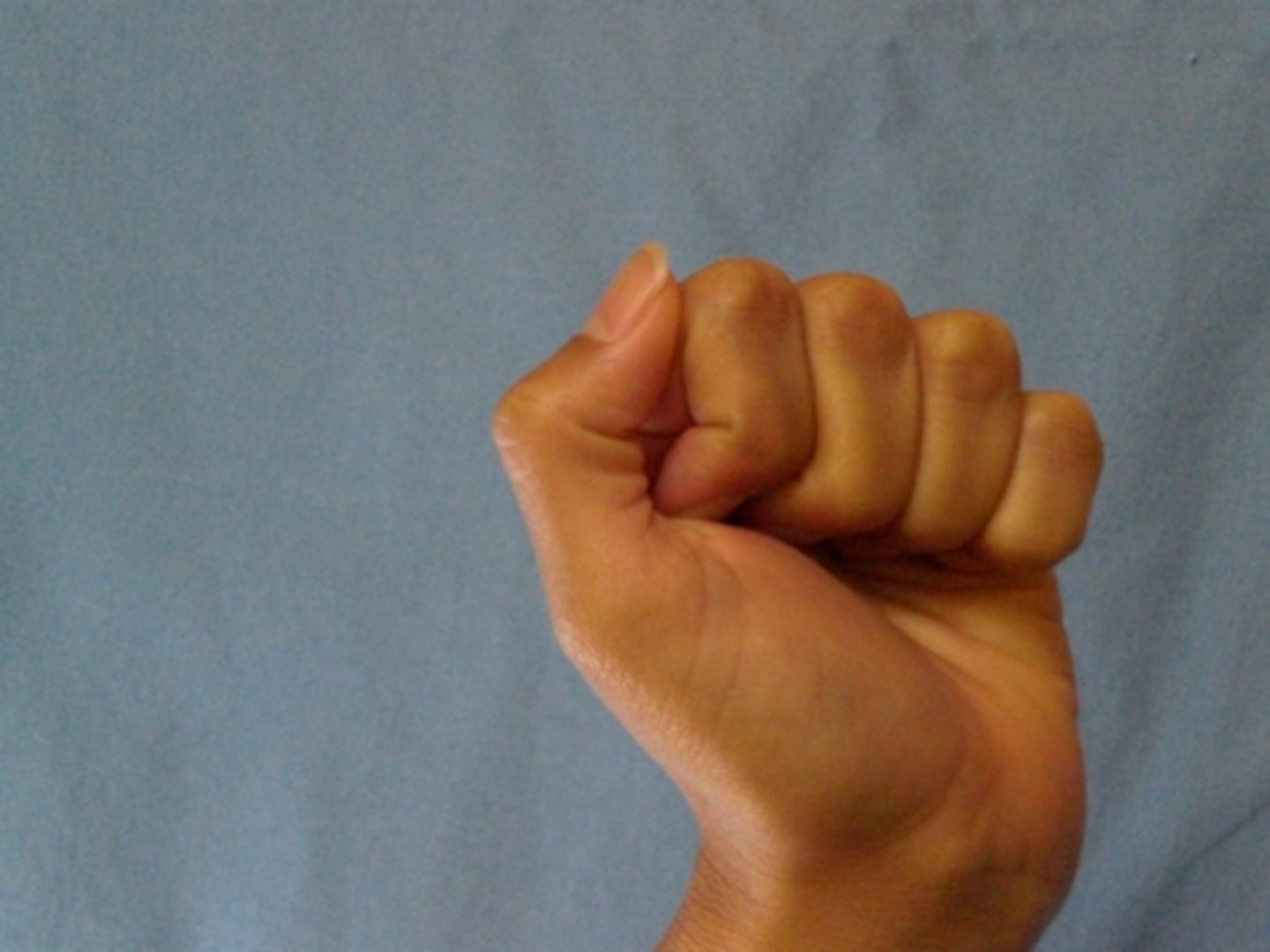
What hand position has maximum glide of FPL?
Thumb MCP and IP flexion
What is Place-and-Hold exercise? When would you use it?
Active-assistive to end range, then ask client to sustain position without holding it
Helpful when PROM > AROM
How do you facilitate maximum excursion of flexors? of extensors?
Flexors: full finger & wrist extension
Extensors: full finger & wrist flexion
How to facilitate tendon glide in FDP? in FDS?
FDP: hold PIP, flex DIP
FDS: hold all but one finger in MCP extension, flex the one finger at PIP
Extensor lag
full passive extension but incomplete active extension
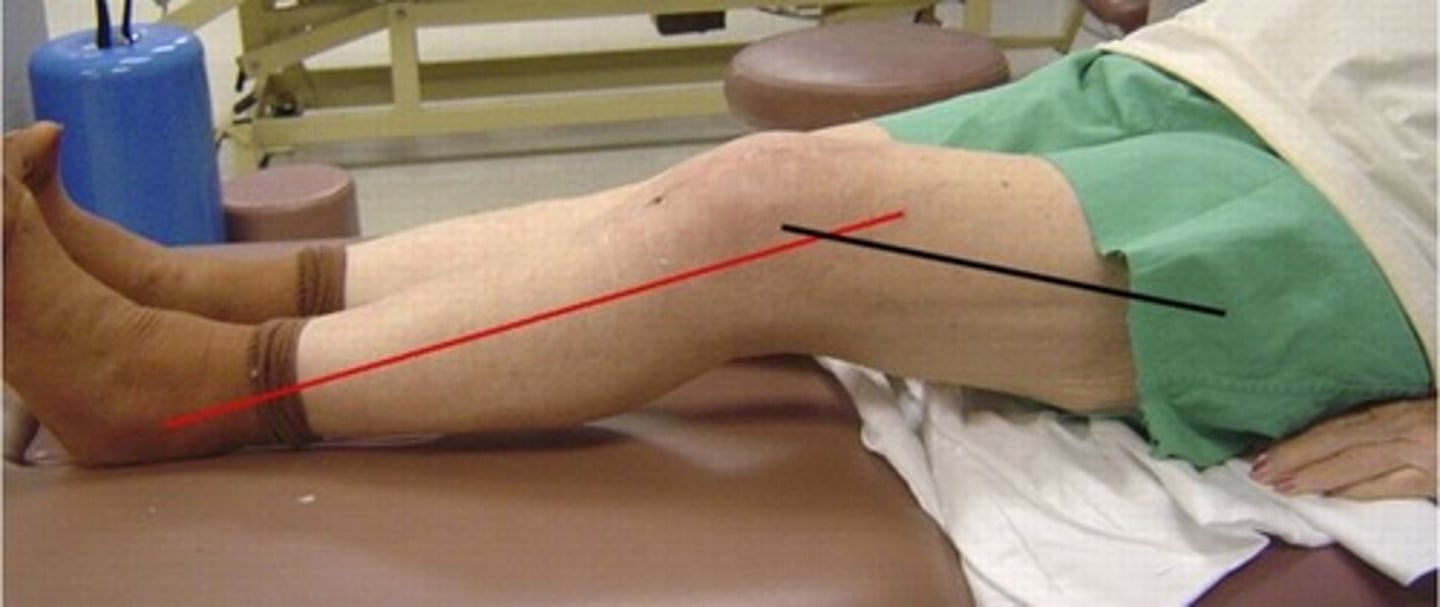
What kind of adhesion is indicated when MCP's can't extend fully?
EDC (extensor digitorum communis)
What is the motion used to get full excursion of EDC?
PIP + DIP flexion (hook), then MCP extension
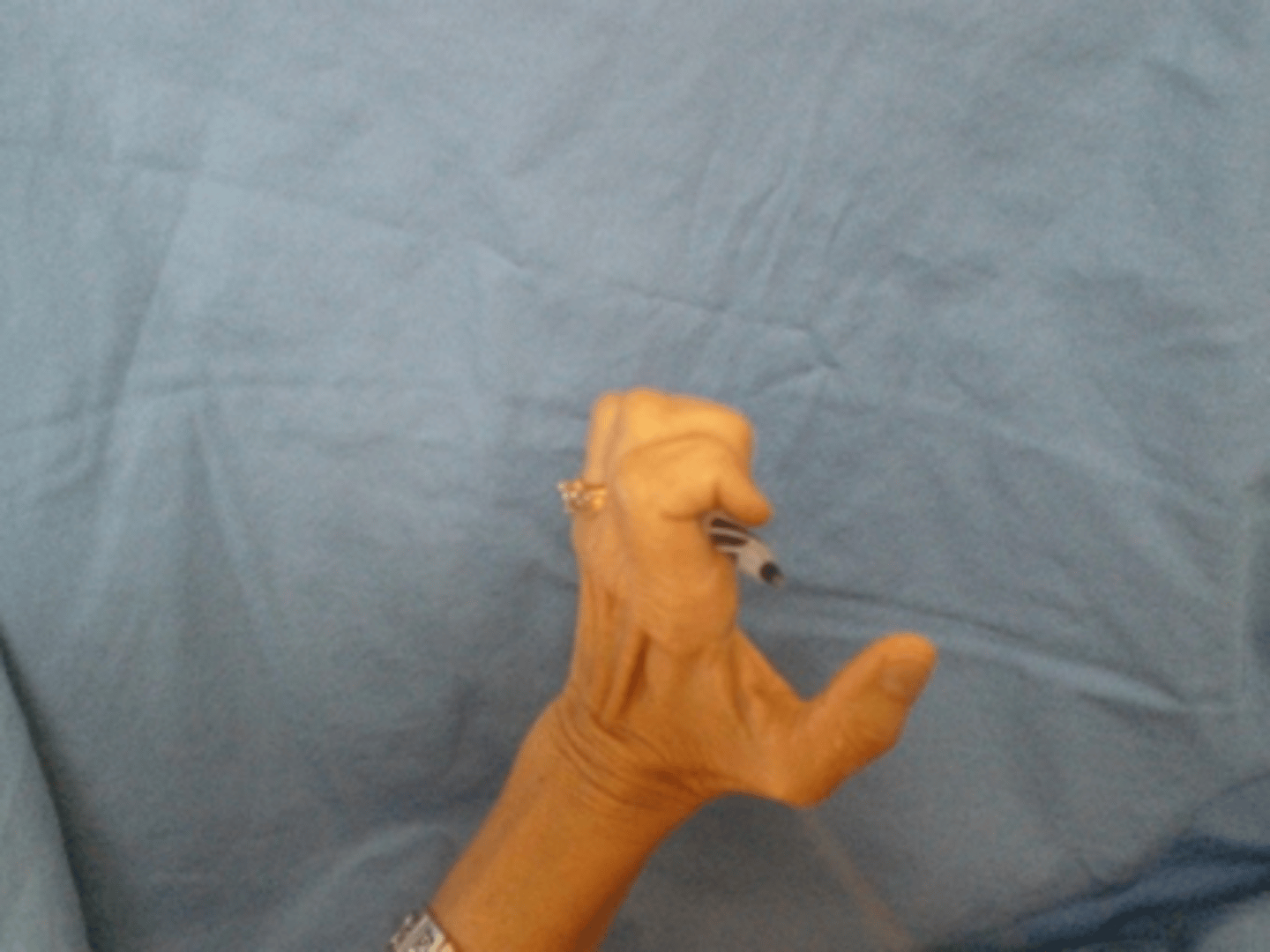
What issues could cause lag at PIP or DIP joints?
adhesions at complex extensor hood
Involvement of EDC, lumbricals, &/or interossei
Look over slides 51-53 for extensor info
Protected ROM
place repaired structures in protected position
What type of exercises provide the least amount of stress on an injured body part?
Place-and-hold exercises
___________ facilitates stretch of connective tissue prior to exercises
heat
T or F: Allowing muscles to cool in the lengthened position can allow permanent change
True
Buddy strap
provides PROM, can prevent deformity
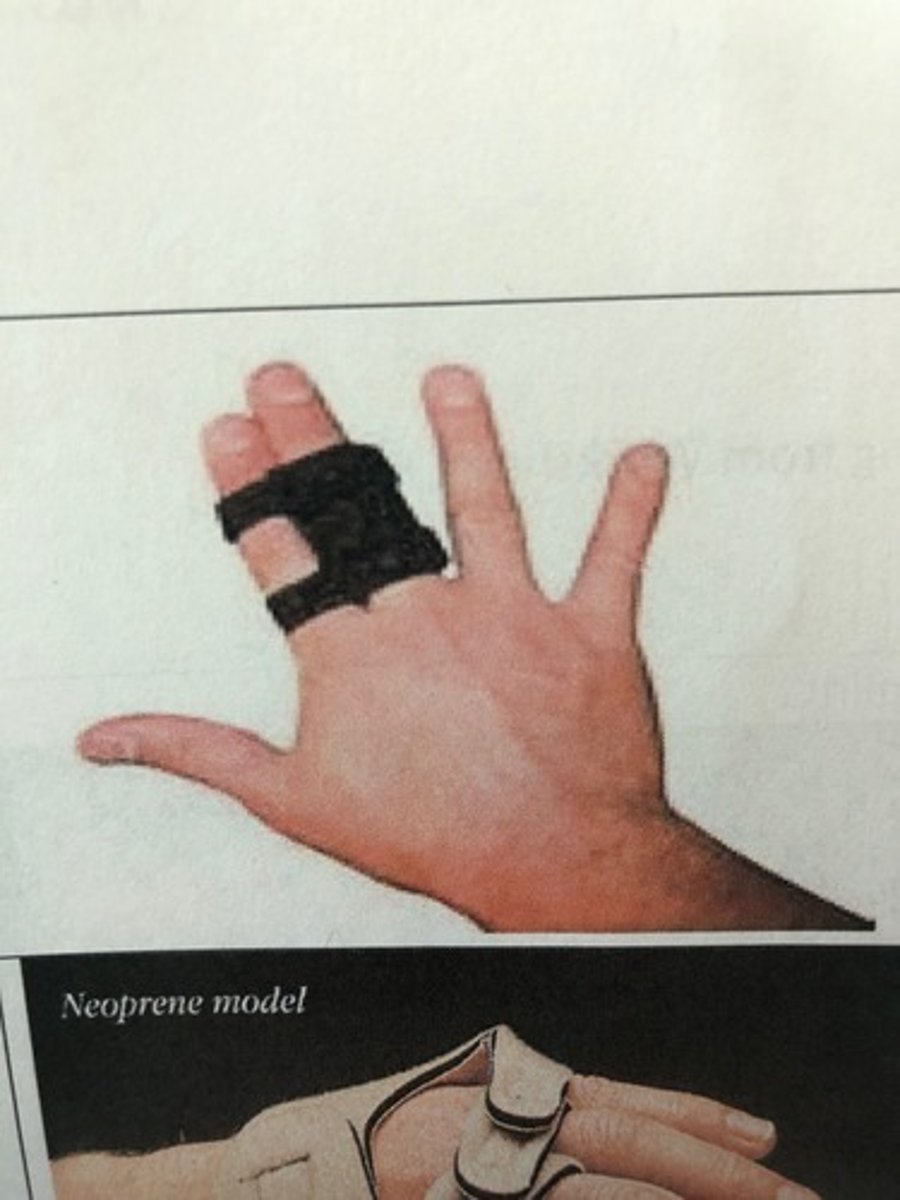
Dynamic components can provide ____________
Static progressive devices for sustained ___________________
dynamic: resistance
Static: end range mobilization
Continuous passive motion (CPM)
More effective at preventing than correcting limits (8 hours a day)
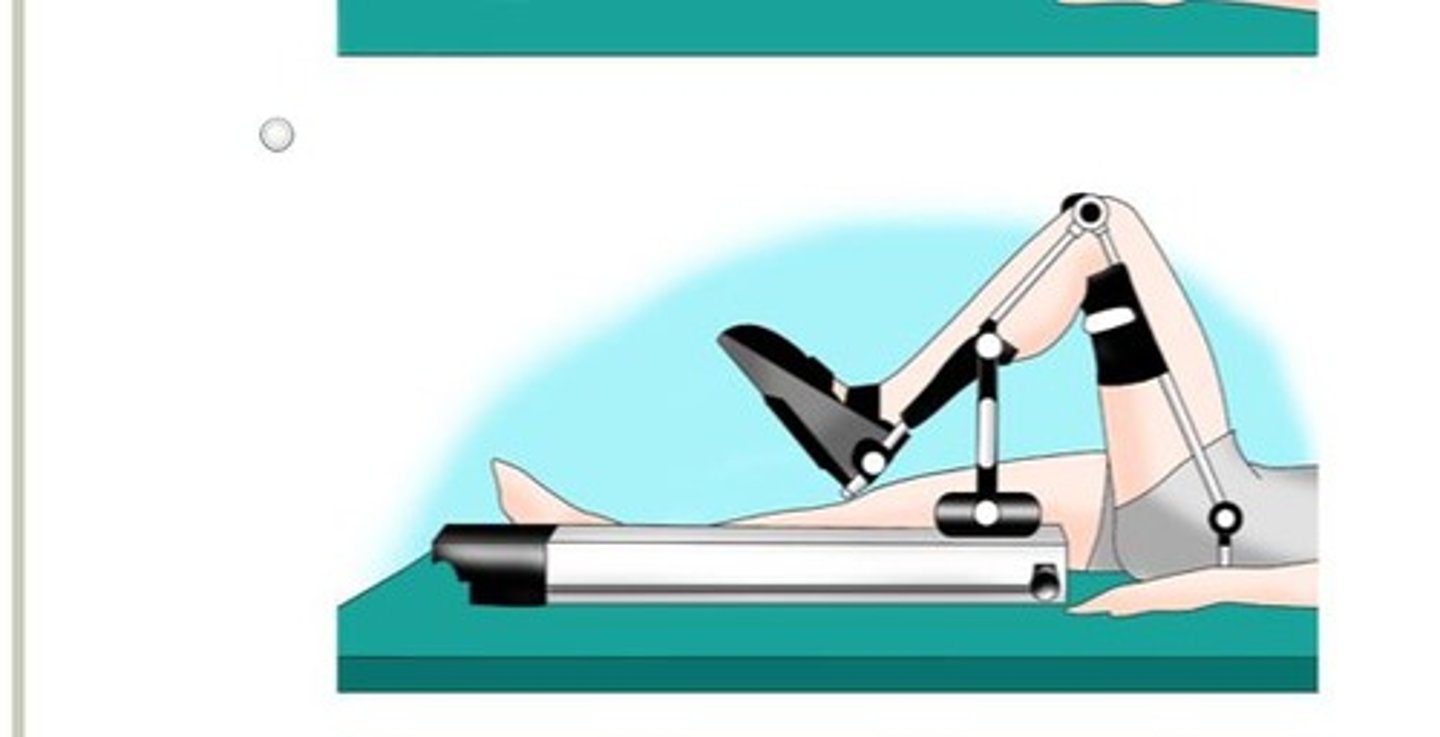
Neuromuscular electrical stimulation (NMES)
Muscle re-education, increases muscle strength, and/or increases stress exerted on adhesions
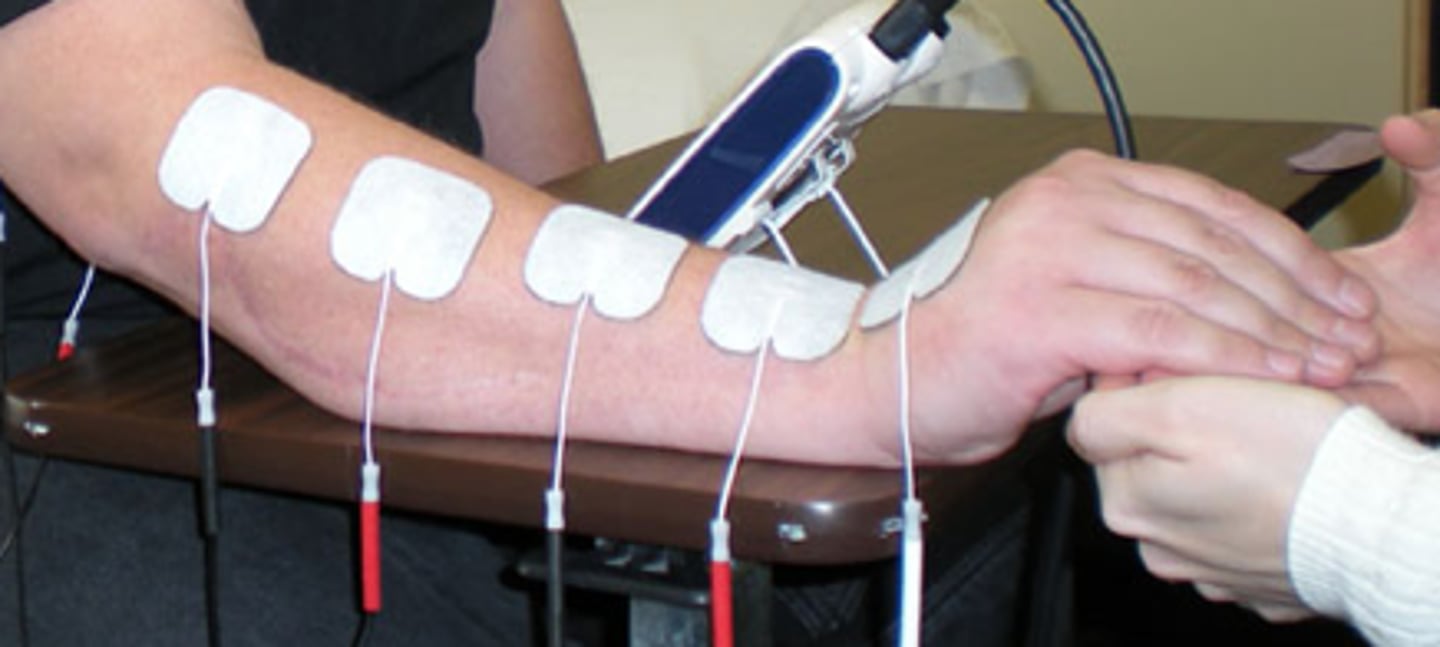
Home exercise programs (HEPs)
- Needs patient cooperation
- Should not be painful
Use ___________, ______________ when stretching
low load, long duration
What is restorative glide?
flexion of individual fingers one at a time while keeping other fingers extended
